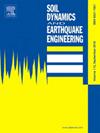Earthquake prediction optimization using deep learning hybrid RNN-LSTM model for seismicity analysis
IF 4.2
2区 工程技术
Q1 ENGINEERING, GEOLOGICAL
引用次数: 0
Abstract
Earthquakes are among the most destructive natural disasters, posing severe risks to human life and infrastructure. Accurate and reliable earthquake forecasting systems are crucial for effective disaster management and mitigation. Recent advancements in machine learning and deep learning present promising pathways for enhancing earthquake prediction accuracy. This study provides an in-depth investigation of machine learning methods for earthquake forecasting, emphasizing their critical role in disaster prevention. Four deep learning models are evaluated: Recurrent Neural Networks (RNN), Long Short-Term Memory networks (LSTM), AdaBoost, and a hybrid RNN-LSTM model. The RNN-LSTM hybrid model demonstrates exceptional performance by leveraging the strength of LSTM in capturing long-term dependencies and RNN in detecting short-term patterns, allowing for a comprehensive analysis of seismic activity. Among these models, the RNN-LSTM hybrid stands out, achieving an impressive accuracy rate of 98 %, significantly surpassing the other models. These results highlight the potential of machine learning technologies to improve earthquake prediction precision. The proposed approach enhances current forecasting methods, offering more accurate and reliable earthquake predictions. This research makes a substantial contribution to disaster preparedness and mitigation.
地震是最具破坏性的自然灾害之一,对人类生命和基础设施构成严重威胁。准确可靠的地震预测系统对于有效的灾害管理和减灾至关重要。机器学习和深度学习的最新进展为提高地震预测准确性提供了前景广阔的途径。本研究深入探讨了用于地震预报的机器学习方法,强调其在灾害预防中的关键作用。本研究评估了四种深度学习模型:递归神经网络(RNN)、长短期记忆网络(LSTM)、AdaBoost 和 RNN-LSTM 混合模型。RNN-LSTM 混合模型利用 LSTM 在捕捉长期依赖性方面的优势和 RNN 在检测短期模式方面的优势,对地震活动进行了全面分析,从而表现出卓越的性能。在这些模型中,RNN-LSTM 混合模型表现突出,准确率高达 98%,大大超过了其他模型。这些结果凸显了机器学习技术在提高地震预测精度方面的潜力。所提出的方法增强了当前的预测方法,提供了更准确、更可靠的地震预测。这项研究为防灾减灾做出了重大贡献。
本文章由计算机程序翻译,如有差异,请以英文原文为准。
求助全文
约1分钟内获得全文
求助全文
来源期刊

Soil Dynamics and Earthquake Engineering
工程技术-地球科学综合
CiteScore
7.50
自引率
15.00%
发文量
446
审稿时长
8 months
期刊介绍:
The journal aims to encourage and enhance the role of mechanics and other disciplines as they relate to earthquake engineering by providing opportunities for the publication of the work of applied mathematicians, engineers and other applied scientists involved in solving problems closely related to the field of earthquake engineering and geotechnical earthquake engineering.
Emphasis is placed on new concepts and techniques, but case histories will also be published if they enhance the presentation and understanding of new technical concepts.
 求助内容:
求助内容: 应助结果提醒方式:
应助结果提醒方式:


